RECOIL OFFGRID Survival Grayside Hunter: Urban Man Tracking Course
In This Article
Tracking is one of humanity’s oldest survival skills, honed by necessity and refined by generations. Yet, in our modern age of convenience, the primal art of tracking often feels like a relic of the past. That was the premise of “Grayside Hunter,” a two-day urban tracking course taught by Freddy Osuna, founder of Greenside Training. As the only Native American-owned and operated tracking school, Greenside Training offers a perspective deeply rooted in tradition while addressing contemporary challenges. Here are some of the key lessons I took away from this transformative experience.

Freddy Osuna of Greenside Training shows us how far we can see with our peripheral vision.
Day one began in a classroom setting, where Osuna laid the groundwork for understanding tracking. He reminded us that the ability to track is hardwired into human nature — our brains evolved to recognize patterns and interpret the world through observation. This skill, once critical for survival, has practical applications today in search and rescue, law enforcement, wildlife conservation, and even urban environments. But beyond the scope of those who protect and defend, learning tracking skills can help boost critical awareness skills important to the average citizen.
Tracking, Osuna explained, is not just about following footprints but about “reading the story written in the sand.” Each step is like a word, and many steps form sentences, creating a narrative that reveals the quarry’s movements and intentions. Using the analogy of separating quarters from a pile of mixed coins, he demonstrated how our brains, once trained, can quickly identify patterns that might otherwise go unnoticed or get lost in the noise.
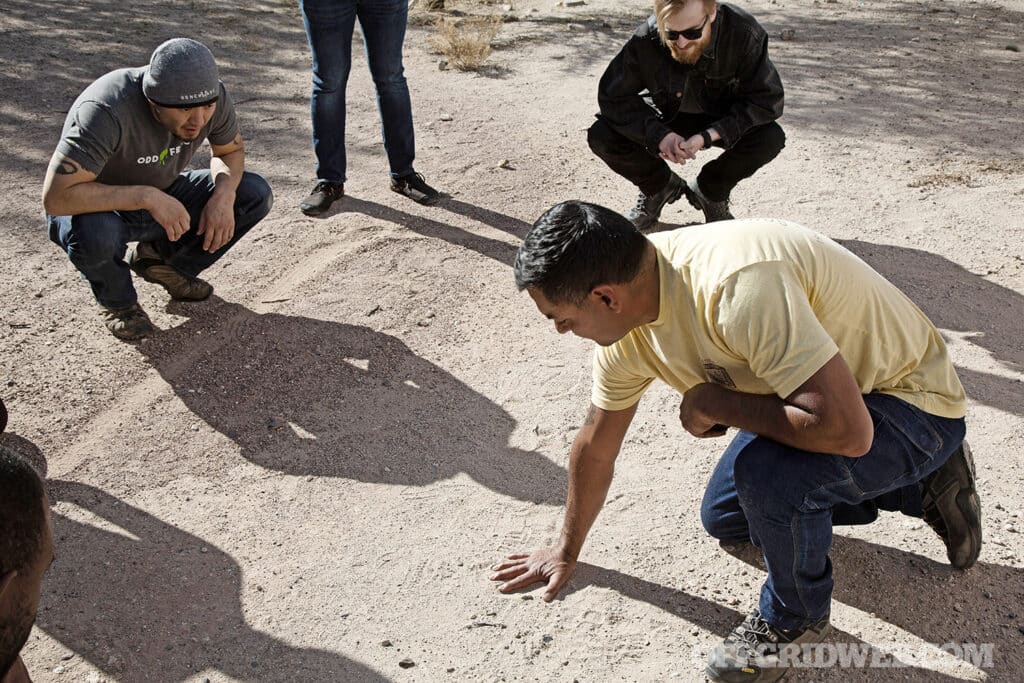
Small details will help the tracker determine if they’re following the correct track or not.
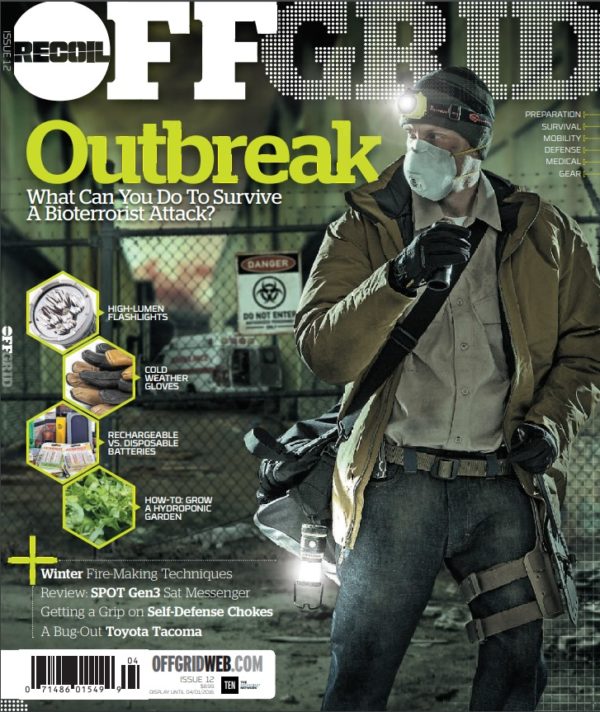
Osuna drew an insightful comparison between modern humans and our ancestors, likening us to domestic dogs and wolves. While we’ve grown reliant on modern conveniences, our fundamental tools for survival remain intact. Sight, smell, and hearing are as sharp as ever — they just need retraining.
He emphasized how tracking training reignites these primal instincts, enabling us to perceive and interpret “sign” or evidence of passage. This skill, he noted, has life-or-death implications in various fields, from combat operations to anti-poaching efforts.
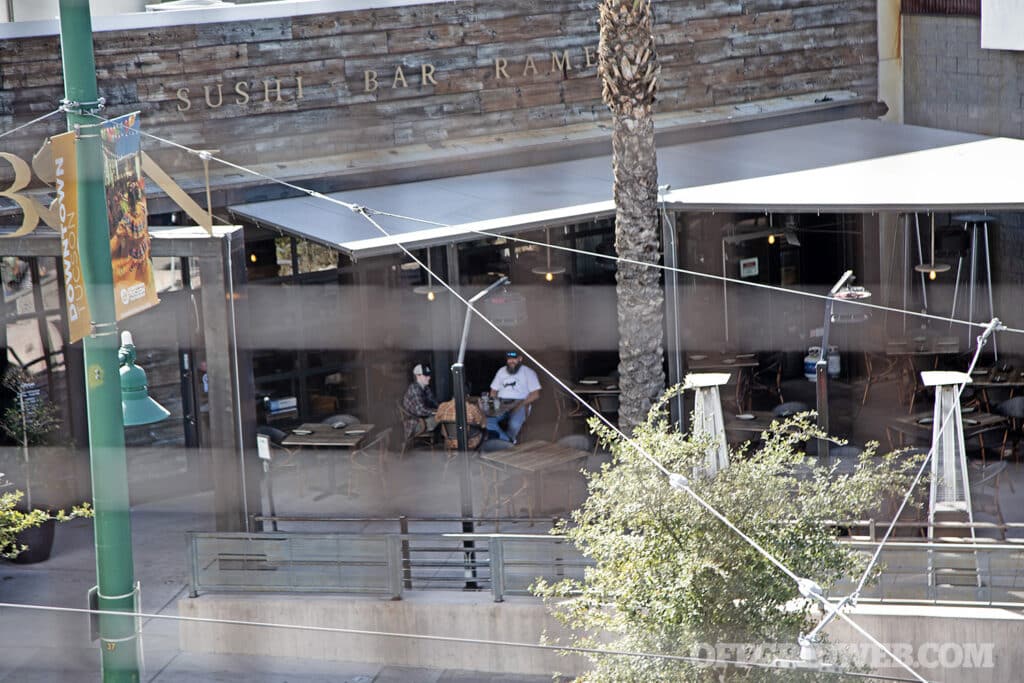
Oblivious to the fact they are under observation, the quarry meet at a restaurant to make an exchange.
One of the most fascinating parts of the course was learning about human visual perception. Osuna broke down how our eyes and brains process visual information, including the three visual fields: full view, peripheral view, and central view. Our saccadic eye movements — subtle, constant shifts in focus — are evolutionary adaptations designed to detect predators and anomalies in our surroundings. The human eye also has a blind spot because of the way the optic nerve attaches to the retina. Our brains stitch this spot in by something referred to as “perceptual fill,” another important visual adaptation.
By training these visual skills, trackers can identify minute details, such as the subtle shine change of disturbed soil or the outline of a boot print. Osuna’s description of our blind spot — where our brains fill in missing information — reminded us of the importance of conscious observation and avoiding assumptions.
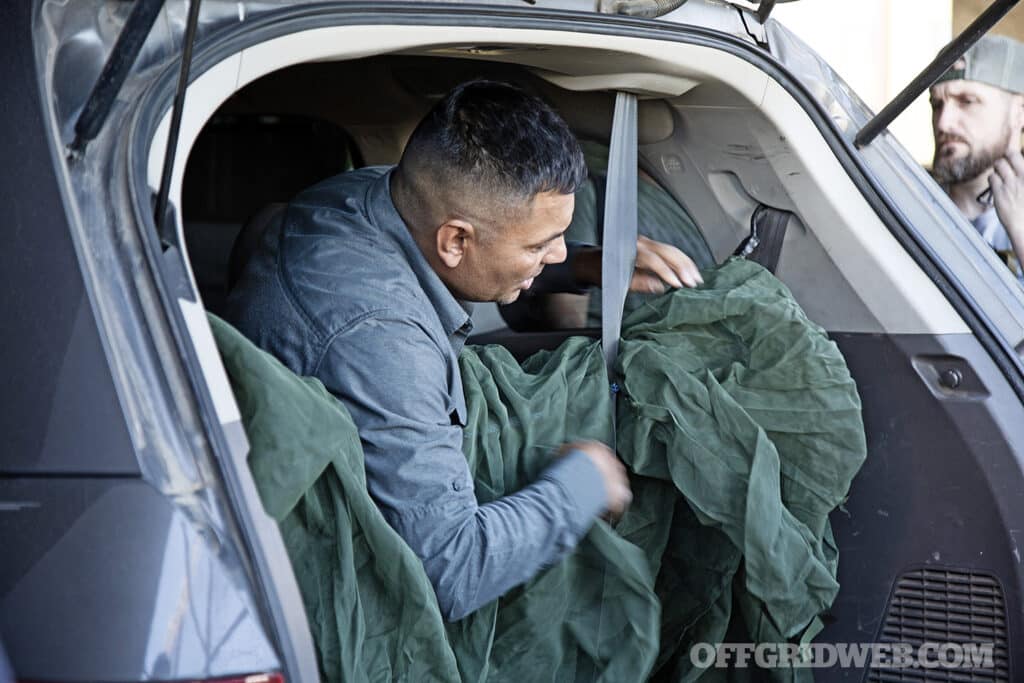
The inside of a vehicle can be turned into a mobile observation post.
During the classroom portion, we learned a helpful mnemonic to remember foundational tracking principles. These were encapsulated in the acronym TRACKING:
• Tracker sets the pace.
• Record your starting point.
• Always know your position.
• Confirm aerial spoor with ground spoor.
• Keep visual on the track with team position.
• Identify the tracks you wish to follow.
• Never force a track to conform to preconceptions.
• Get into the mind of your quarry.
These rules were reinforced through drills, where we practiced identifying individual characteristics of tracks, such as tread patterns and stride anomalies. We also learned how environmental factors like light and terrain influence the clarity of tracks.
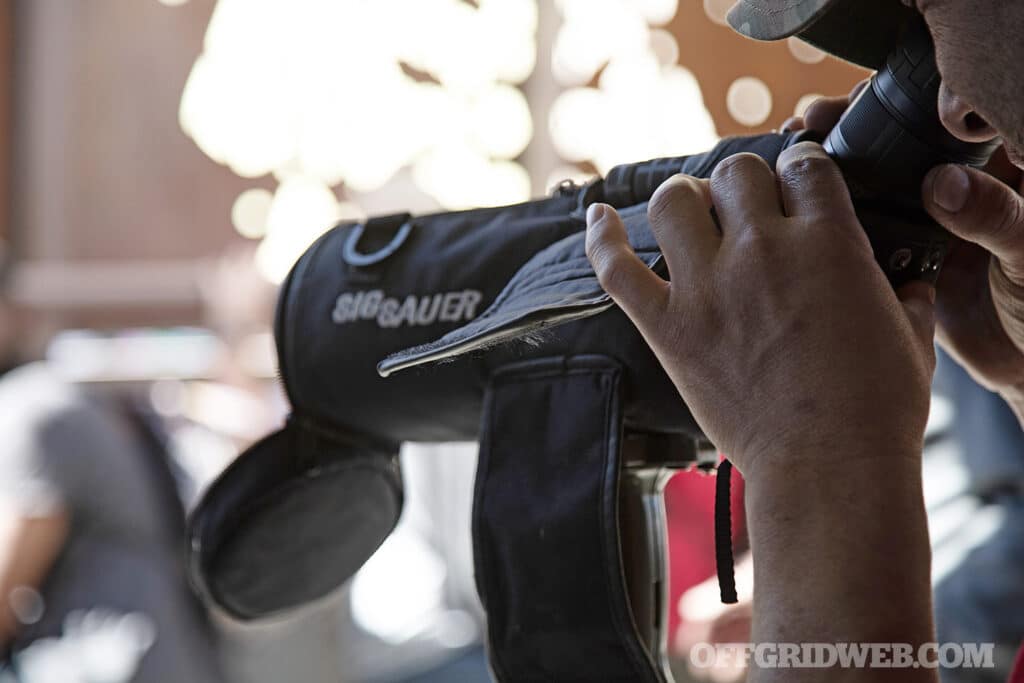
Using high-powered optics, Greenside trackers carefully observe their quarry from a concealed vantage point in a parking garage.
Day two brought the ultimate test: tracking quarry through downtown Tucson, Arizona. The mission began with a briefing scenario, not a real-world situation of course, but certainly one that could plausibly arise. A law enforcement agency requested assistance in tracking three suspects from their last known point. Our objective was to locate and observe them, gather evidence of their movements, and, if possible, confirm whether or not they make some sort of exchange.
Split into three teams — Alpha, Bravo, and Charlie — we started tracking from the suspect’s truck in a parking lot. Using track traps and transference points like dusty patches or scuff marks on sidewalks, we followed their trail. Each team faced unique challenges in interpreting subtle signs while navigating the complexities of an urban environment, including hard surfaces and crowded areas. Communication became critical as we coordinated movements, relayed findings, and maintained situational awareness.
The teams worked together relatively seamlessly, balancing speed with caution to avoid losing the trail or alerting the suspects. By observing from a distance and using cover effectively, we eventually spotted the suspects meeting at a designated location. From an observation post in a nearby parking garage, we confirmed their identities and documented their exchange with photos and notes.
Osuna concluded the exercise by demonstrating how to establish long-term observation posts and the nuances of using optics effectively in urban environments. We were then shown how a vehicle could be transformed into a mobile observation post, without a passing pedestrian being able determine what was happening inside. This hands-on scenario brought the principles of tracking to life, emphasizing teamwork, observation, and adaptability in a setting far removed from traditional wilderness.
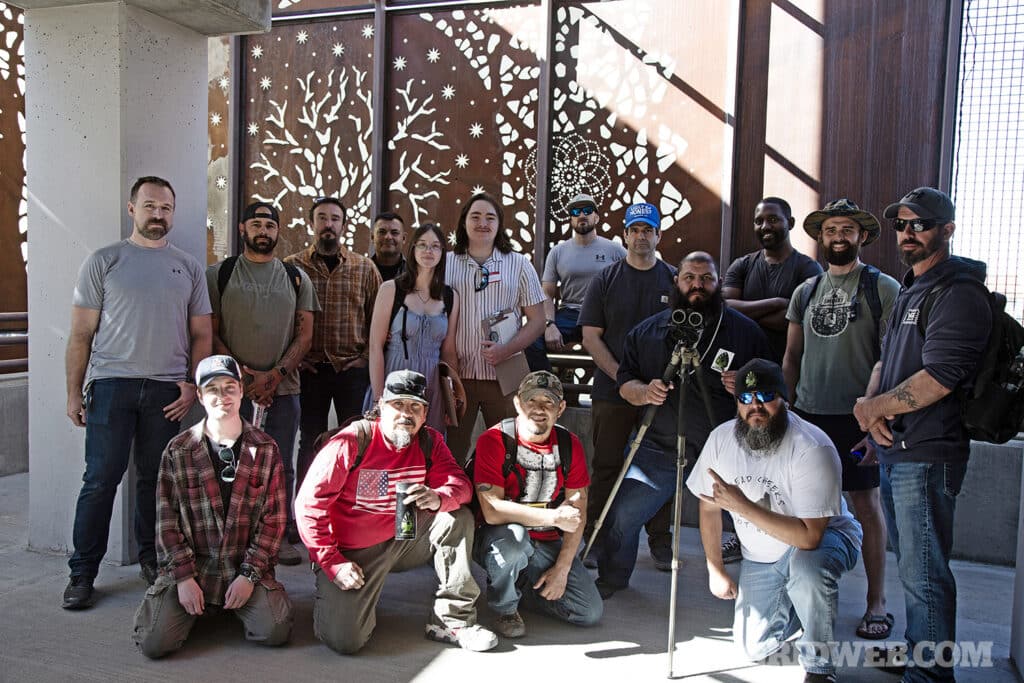
Our class was a diverse crew. From construction workers, to cooks and chemists, we all walked away with an amplified awareness of our urban environment.
Greenside Training's Grayside Hunter course was a journey into rediscovering an ancient skill that remains relevant in our modern world. The urban tracking scenario demonstrated how cities, despite their structured appearance, mimic wilderness environments. Streets and buildings funnel movement much like natural terrain, offering opportunities to predict and follow a quarry’s path. Yet, urban tracking also presents unique challenges, such as numerous hiding places and potential for eliminated ground spoor signatures for the untrained observer.
Osuna’s teaching method, inspired by a long lineage of hunting and tracking experts and combined with how children learn languages, made complex concepts accessible and memorable. His blend of tradition, science, and practical application highlighted the universal value of tracking — as a tool for survival, a way to connect with our primal nature, and a means of seeking truth.
By the end of the course, I left with more than a Greenside Training patch and Tracker tab. I gained a deeper appreciation for the art of tracking and its role in bridging the gap between the natural and urban worlds. No matter who you are, or what your background is, the lessons of Grayside Hunter offer invaluable insights into both the wilderness and ourselves, proving that the skill of tracking has no boundaries.
Don’t miss essential survival insights—sign up for Recoil Offgrid's free newsletter today!
Check out our other publications on the web: Recoil | Gun Digest | Blade | RecoilTV | RECOILtv (YouTube)
Editor's Note: This article has been modified from its original version for the web.
 STAY SAFE: Download a Free copy of the OFFGRID Outbreak Issue
STAY SAFE: Download a Free copy of the OFFGRID Outbreak Issue
No Comments